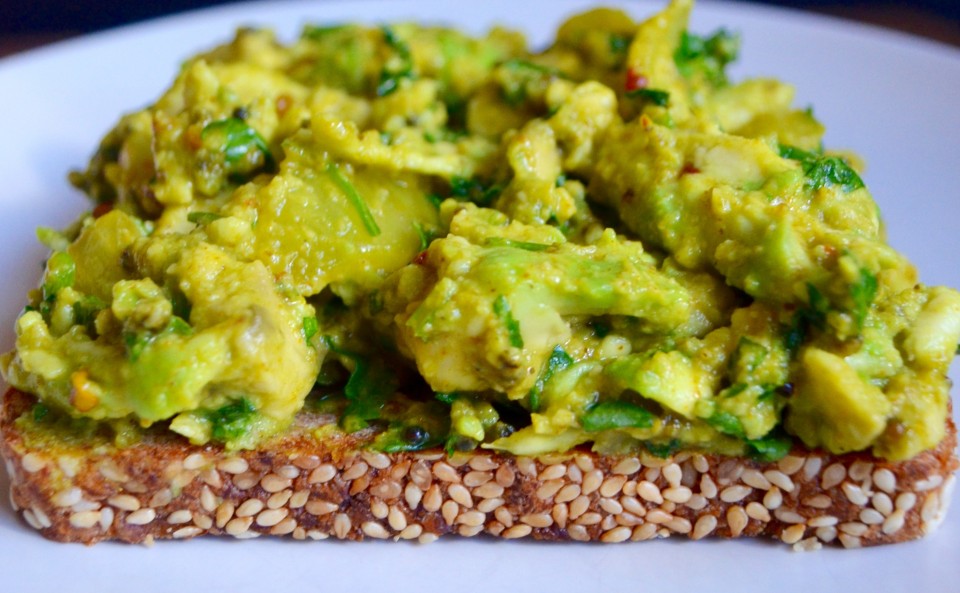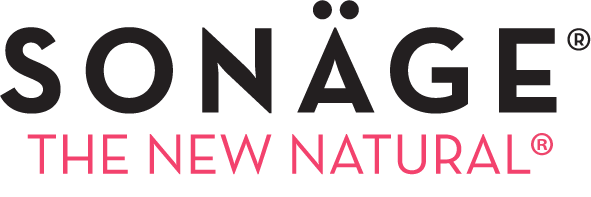
Glow from Within: Avocados and Fat
This is the second in a series of monthly posts by Certified Health Coach and Plant-Based Chef Julie Magnussen. We’re calling it “Glow From Within,” because we know that what you put in your body is just as important as what you put on your skin. If you missed the first post, "Glow From Within: Lycopene and Tomatoes," you can read it here. By Julie Magnussen We all bask in delight when our skin is clear, supple, and yes, glowing from within! But with the toxins inundating our systems each day (through food and the environment), it’s inevitable that we’ll experience a spectrum of skin issues at some point in our lives. When searching for solutions to our skin problems, there isn’t one blanket answer. Our bodies are made up of intricate systems, all working together to function in the most optimal way. When our skin’s system stops working efficiently, this is an indication that there is a disruption in our body’s natural balance somewhere deep inside.
Thank goodness our bodies are smart and give us signals as to what they need! One of the major players causing these imbalances is our hormonal system. Hormones regulate pretty much everything that makes us human: digestion, breathing, sleep, sex, reproduction, etc. Estrogen affects skin thickness, firmness and moisture levels, and testosterone affects sebum production. Yes, hormones cause those awful big bumps below the skin that just aren’t “pop-able” but they can even be the cause of the little buggers that won't quit. For example, hormonal changes can cause an overproduction of sebum or toxins causing an overproduction of skin bacteria, producing more breakouts at the surface level. The best way to keep our hormones balanced and in-check is through…you guessed it, consuming the right foods! One macronutrient in particular that is essential to the health of our hormonal system is fat. But ensuring we consume the right kind of fat is crucial to getting that glow we’re looking for. So what is healthy fat? As a general rule-of-thumb, think as low-processed as possible. Ghee (clarified butter), grass-fed butter, cod-liver oil, unrefined coconut oil, ground nuts/seeds, and avocado (my absolute favorite) are all great choices to include in your everyday diet. But because these fats can be extremely volatile (break-down easily) in heat, it’s important to know how to consume these fats to nourish our bodies rather than add to the toxin overload.
Quick tips for consuming good fats in a healthy way: - Know your smoke-point. When cooking with oil, be sure to check the smoke-point of the oil you’re using. If you see smoke rise from the oil in your sauté pan, it has now become rancid and is extremely carcinogenic to your body (i.e. throw it out and start over). High smoke-point oils include grapeseed oil and refined coconut oil. OR you could… - Sauté with veggie broth/water and then add oil at the end of your cooking if you desire to reduce heat interference. Simply add onions to a hot pan and allow them to sweat adding one tablespoon of water at a time to keep things moving, then continue on with the rest of your recipe. - Mix up different kinds of fats. There are so many different kinds of fats that it’s important to get a variety to ensure we’re covering all of our bases. We tend to get a lot of omega 6 fatty acids in our diet because they’re in almost every packaged food. If we over-consume omega 6’s then we reduce the likelihood of omega 3’s taking up residence in our cells. Therefore omega 3’s are a great fat to be conscious to consume each day, along with medium chain fatty acids like the ones you find in unrefined coconut oil. Have a little bit of ghee in the morning, some nuts/cashew cream for lunch, and coconut oil for dinner.
Easy ways to incorporate fats: - Nuts/seeds are easy because it just takes a bit of sprinkle to get your fix. Add almond milk to chia seeds to make a delicious chia pudding, blend cashews and hemp seeds (complete protein too!) together when you’re making creamer or other creamy cashew sauces, sprinkle on pistachios to your desserts (bonus: the green in pistachios is from chlorella!) and so much more. - Toss in fat at the end of cooking. Drizzle your favorite olive oil, sesame oil or coconut oil to finalize your pasta or stir fry sauté. - Add my Cashew Aioli or my Vegan Cheese Sauce as a sandwich spread instead of processed mayonnaise. Every morning I enjoy avocado toast to start my day. There are a myriad of ways to keep it interesting but this is one of my favorite an unexpected ways to enjoy it. Top the toast with an egg and a sprinkle of hot sauce and you’re on your way to glowing skin (and a very tasty start to your day).
Spiced Avocado Toast serves 2
Ingredients: Photo Credit: Julie Magnussen, Healthy Julie[/caption] 2 pieces of Ezekiel bread (or your favorite sprouted grain bread) 1 large avocado (or 2 small), pitted and peeled 1 tbsp. grapeseed oil 2 tbsp. whole mustard seeds (yellow, brown (spicier), or a mix of both work well) 2 tbsp. fresh rosemary, minced 2 tsp. powdered curry 2 tsp. red pepper flakes 1 tsp. garlic powder 1 tsp. onion powder 1/4 tsp. sea salt 2 tbsp. fresh cilantro, finely chopped fresh ground pepper
Directions: 1. Toast the bread and set aside. 2. In a hot skillet, add the grapeseed oil and mustard seeds. Cook the mustard seeds until they begin to pop for 10 seconds. 3. Add the rosemary, curry, red pepper flakes, garlic and onion powders, and sea salt. Cook about 30 seconds or until all the ingredients are incorporated. 4. Remove from heat and add in the avocado flesh. Mash the avocado and cilantro into the cooked spice mixture and and spread on each bread slice. 5. Sprinkle with fresh ground pepper. Eat as is or top with your favorite morning protein. Enjoy! Certified Health Coach and Plant-Based Chef, Julie Magnussen (BS, CHC) is the creative force behind Healthy Julie, a healthy foodie blog with a fresh and conscious approach to a healthier lifestyle. The wellness and cooking blog features original recipes that taste great, look beautiful, and boast incredible health benefits. The goal of Healthy Julie is to educate others to be an active participant in their own health and healing.


